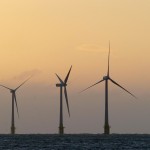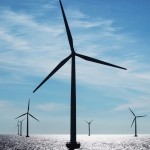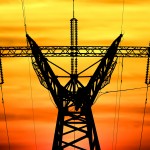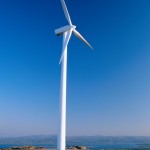 “EWEA names UK leader in offshore wind”
“EWEA names UK leader in offshore wind”
“Offshore-Windparks wachsen weiter und schneller ins Meer”
“UK wind energy blows away EU rivals”
“European Offshore Wind May Surge 70% in 2011, Trade Group Says”
Those were just some of the headlines on stories published by international media outlets, trade publications and blogs in response to a European Wind Energy Association (EWEA) press release last week announcing another surge in the development of offshore wind power.
And it is understandable there was such interest especially considering the EWEA press release noted that “with 308 new offshore wind turbines installed in 2010 – an increase of 51% in installed wind power capacity on the previous year – offshore wind power experienced a new record growth in Europe.”
 Key political decisions and legislation are in the cards for the wind energy industry this year. What exactly is in store and how might it impact the sector?
Key political decisions and legislation are in the cards for the wind energy industry this year. What exactly is in store and how might it impact the sector?
The EU is due to publish its 2050 Roadmap to a Low-carbon Economy, which should show the benefits from a move to 30% greenhouse gas reductions over 1990 levels by 2020. The Roadmap may also outline the path to a 100% renewable energy economy by 2050. This would send an even stronger long-term signal that the EU believes wind power can become a major player in a green economy.
The European Commission should also analyse the National Renewable Energy Action Plans in 2011 and take the necessary action against any Member State which has not put in place the necessary measures to meet its target.
 Greenpeace has hit the nail on the head in its just-launched report, pinpointing grid extension and smart grid management as crucial to the integration of large amounts of CO2-free renewable energy.
Greenpeace has hit the nail on the head in its just-launched report, pinpointing grid extension and smart grid management as crucial to the integration of large amounts of CO2-free renewable energy.
The ‘Battle of the Grids’ report shows that the lack of a fair energy market in Europe means renewables are often forced to play second fiddle to traditional power sources in getting access to the network. However, in a wider, more flexible power network, renewables could be transported from where they are produced to where the power is needed. According to Greenpeace, renewable energy could provide the majority – 68% — of Europe’s power by 2030. EWEA’s wind-only goal for the same year is 33% of Europe’s electricity – nearly half Greenpeace’s target from one renewable source alone. Both Greenpeace and EWEA think renewable energy can provide 100% of Europe’s electricity by 2050.
What is also important to remember, especially in these economically difficult times, is the vast savings well-thought-out grid development would bring. EWEA’s ‘Powering Europe’ report, released last November, identifies a massive €1,500 million yearly reduction in total operational costs of power generation due to the increased availability of all generation capacity. And if we can integrate 265 gigawatt (GW) of wind into Europe’s grids by 2020, we can save at least €41.7bn per year in the cost of electricity because wind power replaces power sources where fuel must be constantly bought and paid for.
 Complicated things sometimes can be explained in only a few words – check out EWEA’s FAQs to find the answers to your wind questions you were always looking for.
Complicated things sometimes can be explained in only a few words – check out EWEA’s FAQs to find the answers to your wind questions you were always looking for.
When talking about wind turbines and their capacity – that is, their ability to generate electricity — the word megawatt is used all the time. Capacity is measured in watts which is a very small unit, so people talk instead about kilowatts (1 kW = 1,000 watts), megawatts (1 MW = 1 million watts), and gigawatt (1 GW = 1 billion watts) when they want to describe the capacity of generating units like wind turbines.
The electricity production and consumption, on the other hand, is measured in kilowatt hours (kWh). A kilowatt hour means one kilowatt (1,000 watts) of electricity produced or consumed for one hour. That means one 50-watt light bulb left on for 20 hours consumes one kilowatt-hour of electricity (50 watts x 20 hours = 1,000 watt-hours = 1 kilowatt hour).
 Nations can experience tremendous renewable energy investment growth over the next decade by adopting enhanced energy and climate policies, according to a new report by the Pew Charitable Trusts.
Nations can experience tremendous renewable energy investment growth over the next decade by adopting enhanced energy and climate policies, according to a new report by the Pew Charitable Trusts.
The 77-page report found investments in wind power and other renewable energy assets in G-20 countries are projected to reach $189 billion by 2020 if governments implement no additional policies.
Financing increases to $212 billion if the G-20 countries enact the pledges they made shortly after the UN climate change conference in Copenhagen last December.
 “EWEA names UK leader in offshore wind”
“EWEA names UK leader in offshore wind”






 Comments
Comments



